Lüderitz became part of the German Empire in 1883, beginning as a modest trading post. Its fortunes shifted dramatically in 1908 with the discovery of diamonds in the region, transforming it into a bustling boomtown almost overnight. These diamonds, carried into the desert by shifting sand dunes rather than embedded in local rock formations, were mined extensively for four decades. However, as the process of sifting through the sands grew increasingly uneconomical, the diamond operations were eventually abandoned.
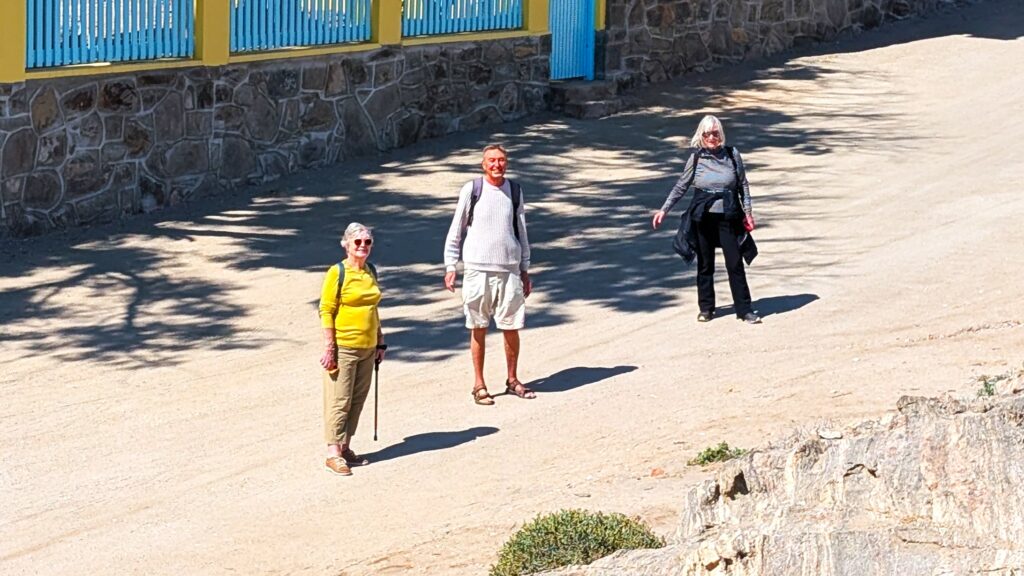
Four of us set out to explore the town and, as Ruth had been to Lüderitz before, she was promptly appointed as our tour guide for this occasion.

Although the town remained relatively quiet after the cessation of diamond operations, its fortunes have seen a partial revival in recent years. The resurgence is driven by activities such as undersea diamond mining and the discovery of additional mineral resources in the region. Furthermore, a growing appreciation for the allure of its colonial-era architecture has spurred investment in the restoration of these historic buildings, enhancing the town’s appeal as a tourist destination.
A new port and waterfront facility is currently being developed in another part of the bay.
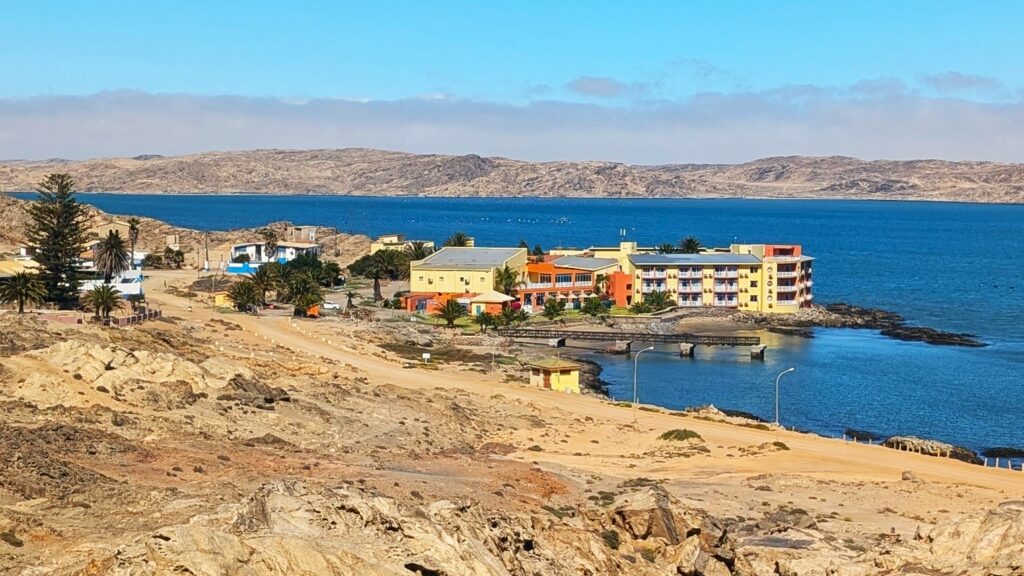
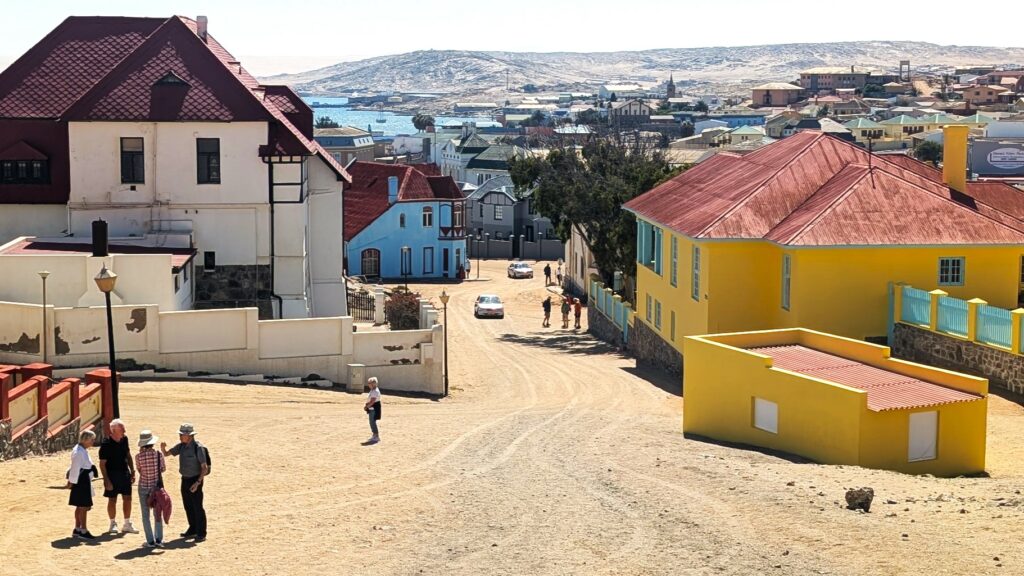
We had an enjoyable walk through the streets and up to the church, and then on our way back towards the port, we found a perfect little restaurant serving lunch with a very welcome pint of beer.
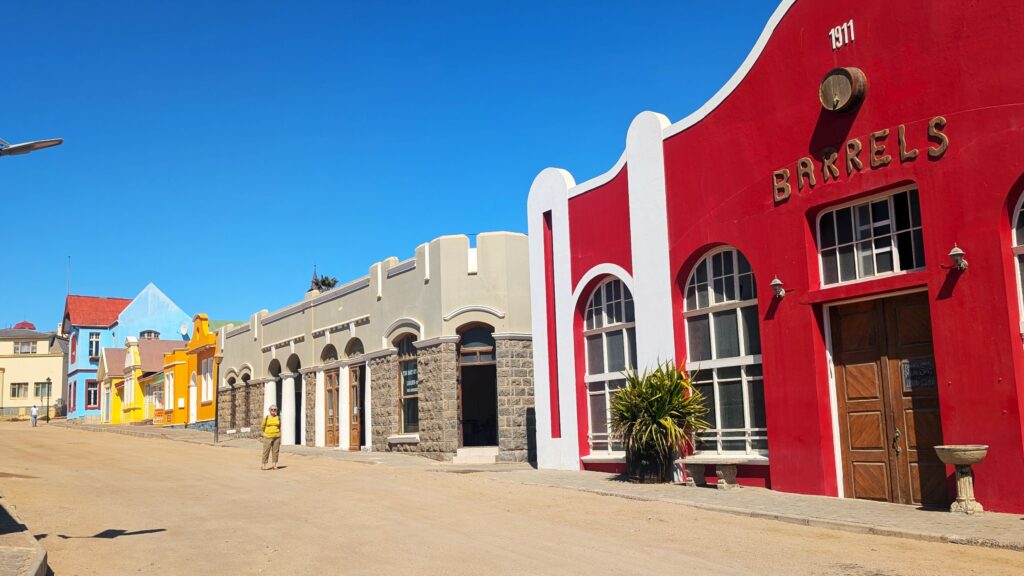
Needless to say, Ruth was awarded top marks for providing this most enjoyable tour.
That evening, we set sail from Lüderitz, bound for Walvis Bay – our second and final port of call in Namibia. There I hope to delve into the fascinating world of wildlife that thrives amidst the harsh desert landscapes.
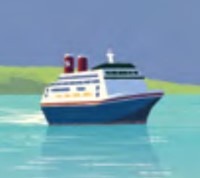
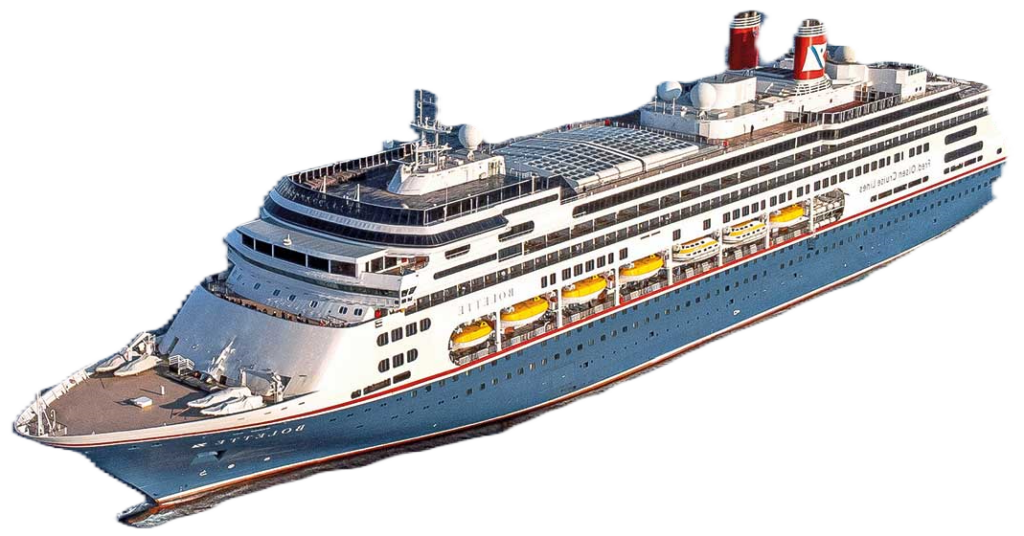

Leave a Reply